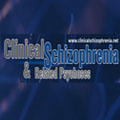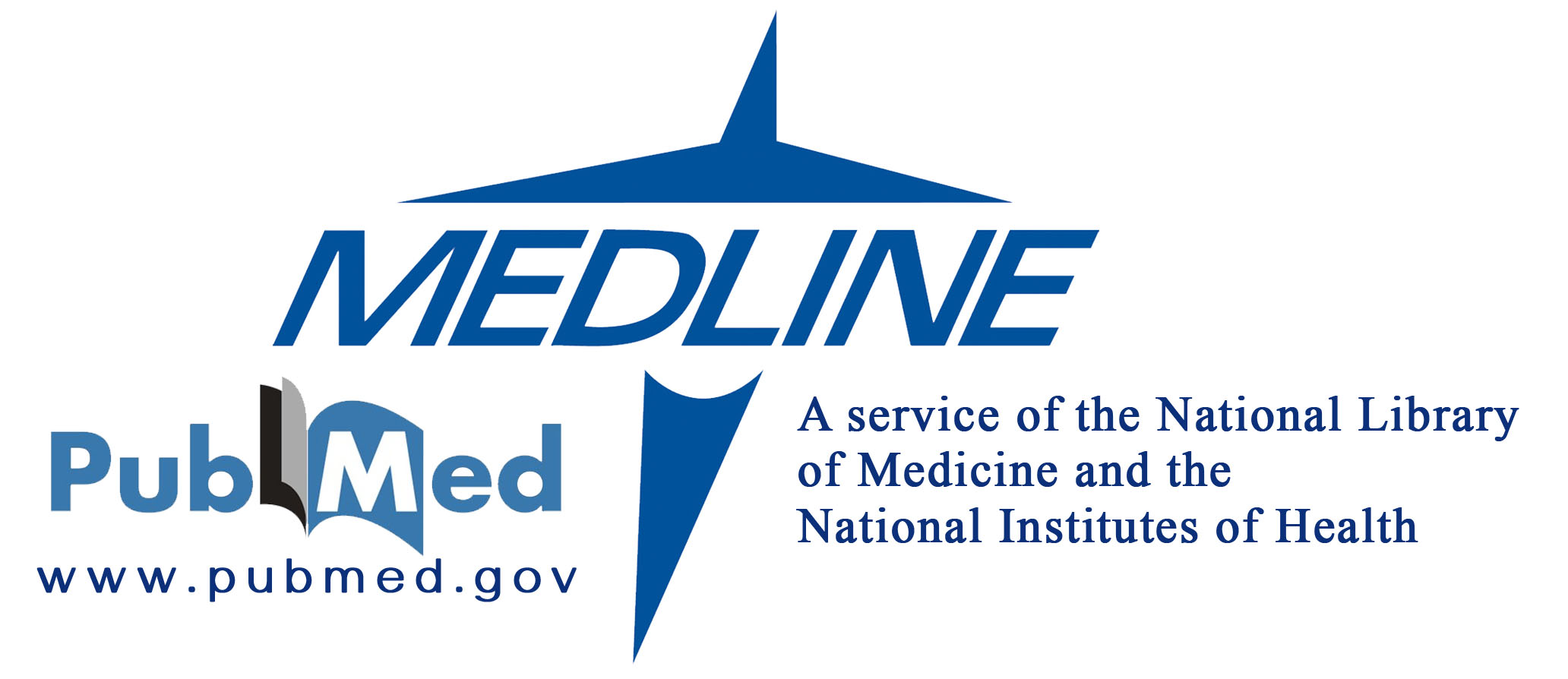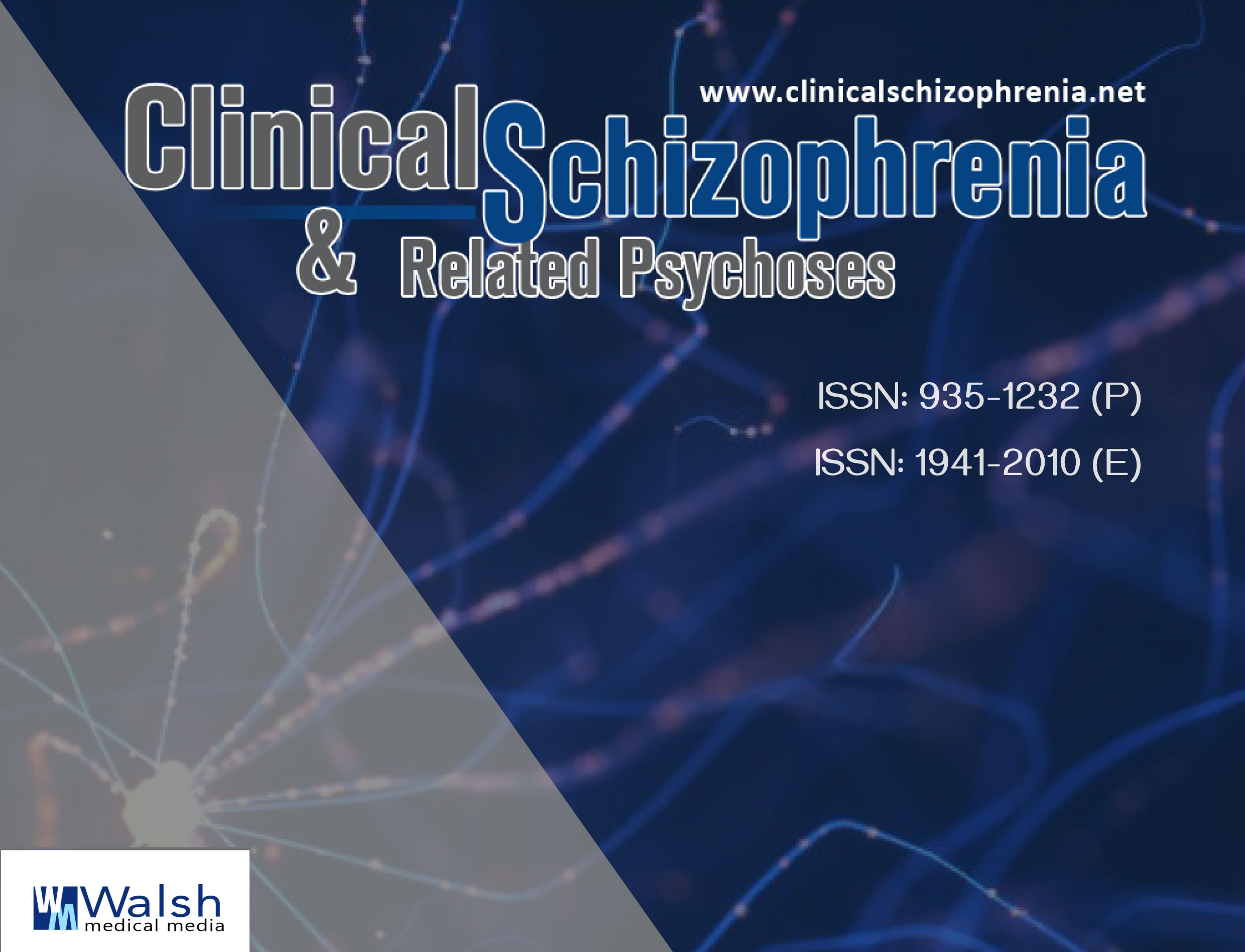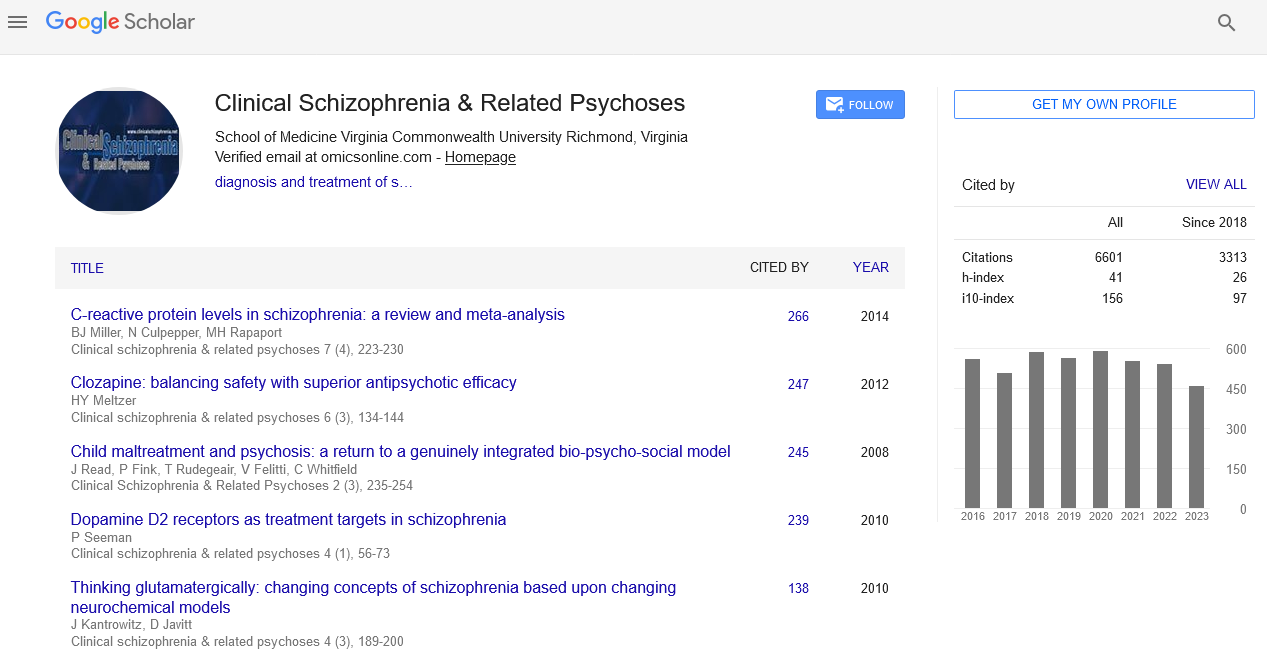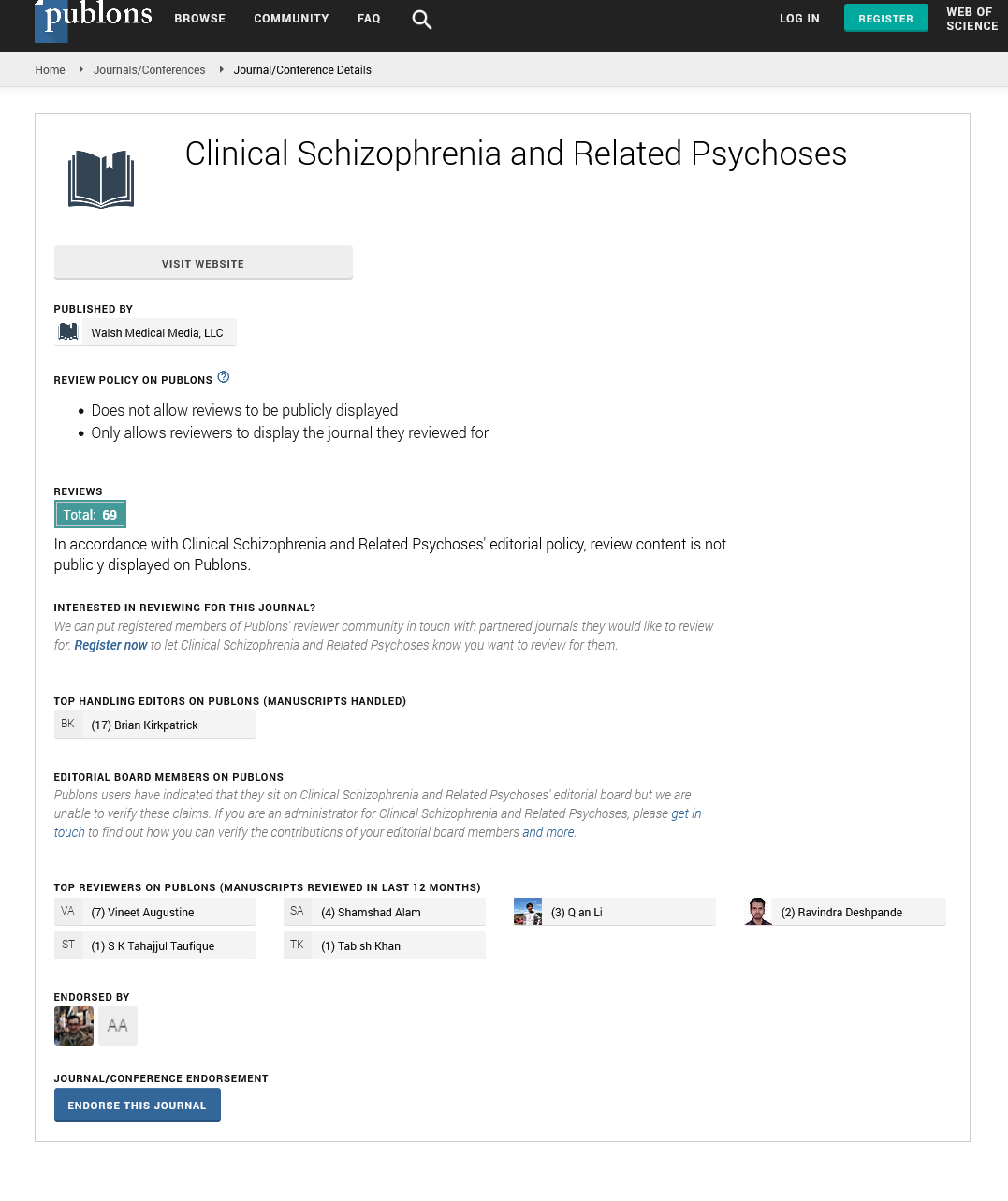Research Article - Clinical Schizophrenia & Related Psychoses ( 2025) Volume 19, Issue 1
TITLE - A study of substance use in patients with schizophrenia â a cross sectional hospital based study.
Sushma V Inamdar1* and G. Gopalakrishnan22Department of Psychiatry, Professor Emeritus, MVJ Medical college and Research Hospital, Bengaluru, Karnataka, India
Sushma V Inamdar, Department of Psychiatry, Assistant professor, S Nijalingappa Medical College and HSK Hospital, Bagalkote, Karnataka, India, Email: drsushmainamdar@gmail.com
Received: 03-Mar-2025, Manuscript No. CSRP-25-161927; Editor assigned: 05-Mar-2025, Pre QC No. CSRP-25-161927 (PQ); Reviewed: 19-Mar-2025, QC No. CSRP-25-161927; Revised: 26-Mar-2025, Manuscript No. CSRP-25-161927 (R); Published: 03-Apr-2025, DOI: 10.3371/CSRP.ISGG.013327
Abstract
Background and objectives: Substance use is commonly seen in patients with psychosis. Comorbidity has profound implication in course, outcome and management of schizophrenia. This study examines patterns of substance use and its correlation with sociodemographic variables.
Method: 60 consecutive cases with diagnosis of schizophrenia with substance use fulfilling inclusion and exclusion criteria were recruited in the study. Semi structured proforma and SCAN 2.1version were applied to establish diagnosis of schizophrenia and substance use.
Results: Mean age of onset of substance use is 29.57 years. Majority were young, married, males, belonging to lower socioeconomic status with rural background. 55% used alcohol followed by tobacco 41.7%, beetle nut 31.7%, benzodiazepines 10%, cannabis 5%.
Conclusion: Alcohol consumption is more common in males as compared to females with tobacco use. 50% had harmful use. Early evaluation will help to treat this dual diagnosis holistically for better outcome.
Keywords
Substance use • Schizophrenia • Alcohol
Introduction
Since time immortal, substance abuse has been linked with insanity [1]. Rates of comorbid substance misuse in schizophrenia are up to five times higher than in the general population [2]. Research has shown that a complex association exists between mental illness and substance use disorders (SUD) [3]. Substance misuse is a broad term encompassing the harmful use of any psychotropic substance including alcohol and either legal or illicit drugs. Such use is usually but not always, regarded as a problem if there is evidence of dependence, characterized by psychological reinforcement of repeated substance-taking behavior and in some cases, a withdrawal syndrome. However, substance misuse can be harmful without dependence, especially among people with a coexisting psychosis [4].
Definitions of substance abuse vary from simple "use" of a psychoactive substance to "abuse" or "dependence" [5]. The term 'dual diagnosis patient' and 'mentally ill chemical abusers or MICA' have been coined to describe patients with co-existent mental illness and substance abuse without considering as to which of the two occurred first, schizophrenia or substance abuse [6, 7]. Approximately 40% of people with psychosis misuse substances at some point in their lifetime, at least double the rate seen in the general population [8].
People with schizophrenia who abuse drugs and alcohol have poorer outcomes than both their non-substance using counterparts and substance users in the general population [6, 7]. They are likely to pose a burden to their families as well as to the societies to a greater extent than either a patient of substance abuse or schizophrenia alone. Psychoactive substances can also interact with the psychopharmacological agents used for the treatment of schizophrenia by directly counteracting their desired effects, by worsening their side effects profile or by altering their pharmacokinetic properties. All these variables in combination can alter the course of illness in both acute and chronic frames [2]. These patients are often on the margins of psychiatric services, alienated by their poor compliance, social instability, behavioral problems, high relapse rates and by the inflexibility of service structures to accommodate them. The greatest impediment to care, however, is often the lack of awareness of substance misuse and it’s under diagnosis [8]. Substance use may color the diagnosis, management and prognosis of major mental illness [8]. Results of many studies were however inconsistent and influenced by variables such as the study population and sample size, as well as the diagnostic criteria that were used. Therefore, the large variance across different settings highlights the need for local surveys to find out substance use in patients with psychosis.
Objectives
1) To identify the pattern of substance use in patients with Schizophrenia.
2) To correlate substance use in Schizophrenia with various sociodemographic variables.
Methodology
Procedure for the study
60 Consecutive patients of either sex belonging to age group of 18 to 50 years, in whom Schizophrenia preceded substance use were recruited who gave informed consent to participate in the study. Patients with Drug induced psychosis, Affective psychosis, Mental retardation, Organic brain injury/organic brain disease, Severe medical illness & Acute substance intoxication/ withdrawal were excluded from the study. A schedule for Clinical Assessment in Neuropsychiatry (SCAN) 2.1 & ICD-10 was applied to establish diagnosis of schizophrenia and substance use in patients enrolled for the study. The socio-demographic, clinical details regarding substance use &schizophrenia were recorded in the semistructured proforma designed for study. Schedules for Clinical Assessment in Neuropsychiatry (SCAN) version-2.1. The SCAN system has been developed in the framework of the World Health Organization (WHO) and National Institutes of Health. SCAN is a set of instruments aimed at assessing, measuring and classifying the psychopathology and behaviour associated with the major psychiatric syndromes of adult life. It has 4 components: the tenth edition of the Present State Examination (PSE10), the Glossary of Differential Definitions, the Item Group Checklist (IGC) and the Clinical History Schedule (CHS). Descriptive and inferential statistical analysis has been performed.The Statistical software namely SAS 9.2, SPSS 15.0, Stata 10.1, MedCalc 9.0.1, Systat 12.0 and R environment ver.2.11.1 were used for the analysis of the data.
Ethical considerations
• Throughout the study ethical considerations were observed by
• Taking informed consent.
• Ensuring confidentially.
• Ensuring that treatment was not compromised in any way by the study.
• Not carrying out any invasive investigations.
Results
35% of patients were between the ages 21-30, 51.7% belonged to 31- 40 years age group which was the highest range & 13.3% were between 41-50 yrs age group. Mean age group of patients in the study was 33.83 years. Standard deviation was found to be 5.76. Majority of the patients were males (65%), 35% were females. Most of the patients were married (61.7%), 16.7% were never married, 3.3% were divorced, 16.7% were separated & 1.7% were widow.
Majority of the study population was from rural background (81.7%), 46.7% were living in the joint family, 18.3% were staying away from their family in boarding houses run by Non-Governmental organizations. In this study 26.35 years was the mean age of onset of psychosis. 46.7% had the age of onset of psychosis in the age group of 25-29years. 7.32 years was the mean duration of psychosis in the study population. Mean age of onset of alcohol in the study population was 29.57 years.
Most common substance of abuse in the study group was found to be alcohol 55%, followed by tobacco 41.7%, beetle nut 31.7%, benzodiazepines 10% & cannabis 5%. (Figure 1). Most of the studies have found these five reasons as main causes of substance use in patients with psychosis. Hence we included them in our proforma & studied in the study population. The most common reason of substance use in the study was boredom related (55%) i.e to decrease anxiety, feel relaxed, 41.7% patients consumed substance to decrease psychotic symptoms (hallucinations) ,20% consumed due to craving & withdrawal symptoms,15 % to decrease medication related side effects & 5% of study group consumed substances to become more sociable. On application of SCAN 50% patients had harmful use, 25% each had dependence syndrome & occasional use of substances. Pattern of alcohol use in both the gender showed high statistical significance of p value <0.001**(M-2-9.5%, F-31-79.5%.). Pattern of alcohol use & SCAN diagnosis for substance use amongst patients showed moderate significance of p value 0.013. (Tables 1 and 2)
| Pattern of substance use | Gender | Total (n=60) |
P value | |
|---|---|---|---|---|
| Female (n=21) |
Male (n=39) |
|||
| Alcohol | 2(9.5%) | 31(79.5%) | 33(55%) | <0.001** |
| Tobacco | 13(61.9%) | 12(30.8%) | 25(41.7%) | 0.020* |
| Cannabis | 0(0%) | 3(7.7%) | 3(5%) | 0.545 |
| Beetle nut | 17(81%) | 2(5.1%) | 19(31.7%) | <0.001** |
| Benzodiazepines | 1(4.8%) | 5(12.8%) | 6(10%) | 0.412 |
| Others | 0(0%) | 0(0%) | 0(0%) | 1.000 |
| Pattern of substance use | SCAN substance use | Total (n=60) |
P value | ||
|---|---|---|---|---|---|
| Harmful use (n=30) |
Dependence (n=15) |
Occasional use (n=15) |
|||
| Alcohol | 11(36.7%) | 10(66.7%) | 12(80%) | 33(55%) | 0.013* |
| Tobacco | 16(53.3%) | 7(46.7%) | 2(13.3%) | 25(41.7%) | 0.026* |
| Cannabis | 1(3.3%) | 1(6.7%) | 1(6.7%) | 3(5%) | 1.000 |
| Beetle nut | 14(46.7%) | 1(6.7%) | 4(26.7%) | 19(31.7%) | 0.018* |
| Benzodiazepines | 1(3.3%) | 0(0%) | 0(0%) | 1(1.7%) | 1.000 |
| Others | 0(0%) | 0(0%) | 0(0%) | 0(0%) | 1.000 |
Discussion
In this study the mean age of the patients with onset of substance use was 29.57 years & males were more predominant. This is in agreement to the general trend that people with psychosis who also have substance use disorders are more likely to be male, younger, less educated & from lower socioeconomic status [2,5,13]. Majority of the patients in the study were married which is parallel to the previous studies reported by Aich K.T et al. 2004 & 2005 [13, 14]. Western literature mostly report an opposite finding that majority of substance abusing population were unmarried or separated/ divorced [9]. Studies showed that patients with psychosis with SUD belong to rural background which is similar to our findings whereas Fowler L.I et al. 1998, found 73.2% of their study population belonged to urban background [13,14,15]. 48.6% were staying in the joint families which are quite different from a study by Robin G. Mccreadie 2002 who found 45% of their study population staying alone [16].
This can be due to the fact that this study is conducted in Indian rural setting where majority of the people stay with their families. In the present study most common substance of abuse was found to be alcohol 55%, followed by tobacco 41.7%, beetle nut 31.7%, benzodiazepines 10% & cannabis 5%. Philips P et al. 2003, reported 49% of problematic alcohol or drug use in their study group [17]. In a study by Aich K.T et al. 2004, the prevalence of cannabis abuse/ dependence was 32.8%, alcohol 22.8%, nicotine 32.8%, and opioid 2.8% of the total sample population [13]. Olfson et al. 2002, showed that there is some evidence that patients with psychotic symptoms are more likely to abuse alcohol than those who do not have psychotic symptoms [18]. Variants of the self-medication model postulate that drugs and alcohol are also used to self-medicate extrapyramidal symptoms caused by neuroleptic medication or to alleviate dysphoria. Dixon et al. 1991, go as far as to suggest that dysphoria might actually be the common factor underpinning increased comorbidity [19].
Available literature reveals no consistent pattern of drug/alcohol abuse amongst patients of schizophrenia. Such variability probably indicates that availability, rather than the specific CNS effects of the drug, determine the choice of drugs in schizophrenia patients (‘environmental determinants’ of substance abuse) [13]. Participants with psychosis consume substances less likely for social activity and more out of boredom. In a study by Fowler.L.I et al.1998, patients with amphetamine, tobacco, cannabis & alcohol use reported dyphoria relief as the most common reason of substance use. Illness related reasons, including the relief of antipsychotic drug side effects, were nominated by 0 to 9 percent of users [15]. This is similar to our study findings. Sullivan J.R et al. 2000, indicated that beetle nut chewing is associated with less severe symptoms of schizophrenia [20]. An Indian study has indicated 3 main motives for substance use maintenance in patients with psychosis:
(1) to cope with negative moods, “decrease depression,” or “relax”.
(2) to feel energetic, improve low self-esteem, or “feel good”.
(3) to reduce withdrawal, “get high,” or achieve intoxication [21].
Robin G. Mccreadie 2002 reported problem use of substances is more than dependence & harmful use [16]. This is contrary to our finding of harmful use being 50% in the study group. In the present study Distribution of gender with substance use showed more tobacco & beetle nut use by females & more alcohol use by males. This can be due to the changing trend which is reflected in National Family Health Survey (NFHS-3) which reported increase in alcohol use among males since the NFHS-2 and an increase in tobacco use among women [22]. High prevalence of alcohol use by males is also supported by Miles H et al. 2003 study [23].
In this study many patients consumed more than one substance. Overall tobacco harmful use was found to be more. Males were predominant in harmful, dependent & occasional use group. Substance users with schizophrenia are at increased risk of poorer symptomatic and functional outcomes than their non-substance using counterparts. In a study by Pencer & Addington 2003, they found that substance use is associated with more positive symptoms [24]. Potvin et al. 2006, found that substance users report greater extrapyramidal symptoms than abstinent patients and are at greater risk of tardive dyskinesia as noted in a study by Dixon et al. 1992 [25,26].
Strengths of the study
This study recruited patients in whom psychosis preceded substance use whereas various other studies have included patients of psychosis with history of substance use during lifetime. It has evaluated study populationin detail by applying SCAN 2.1.
Limitations of the study
1. A longitudinal study would throw some more light on the course of psychosis & effects of substance use on symptoms of psychosis.
2. Other factors like genetic factors, personality traits etc were not considered.
3. Consequences of such dual diagnosis like recurrent hospitalizations etc can be studies.
Conclusion
Most commonly used substance among males was alcohol & in females was tobacco. 50% of patients had harmful use of substance. Younger age, males, low education & socioeconomic status, use are important sociodemographic variables influencing substance use in patients with psychosis. Evaluation & diagnosis of SUD in patients with psychosis is of paramount importance to treat holistically with integrated services to ensure favorable outcome of this dual diagnosis.
References
- Brill H, Nahas CG: Cannabis intoxication and mental illness. In: CG Nahas ed. Marijauna in Science and Medicine. New York: Raven, 1984; 263-306.
- Turkington, Aidan, Ciaran C Mulholland, Teresa M Rushe and Rick Anderson, et al. "Impact of Persistent Substance Misuse on 1-Year Outcome in First-Episode Psychosis." Br J Psychiatry 195(2009): 242-248.
[Crossref] [Google Scholar] [Pubmed]
- Weich, L and W Pienaar. "Occurrence of Comorbid Substance Use Disorders Among Acute Psychiatric Inpatients At Stikland Hospital in the Western Cape, South Africa." Afr J Psychiatry 12(2009): 213-217.
[Crossref] [Google Scholar] [Pubmed]
- National Institute for Health and Clinical Excellence (Great Britain). Psychosis with Coexisting Substance Misuse: Assessment and Management in Adults and Young People. NICE, 2011.
[Crossref] [Google Scholar] [Pubmed]
- Mueser, Kim T, Paul R Yarnold, Douglas F Levinson, Hardeep Singh, et al. "Prevalence of Substance Abuse in Schizophrenia: Demographic and Clinical Correlates." Schizophr Bull 16(1990): 31-56.
[Crossref] [Google Scholar] [Pubmed]
- El-Guebaly, N. "Substance Abuse and Mental Disorders: The Dual Diagnoses Concept." Can J Psychiatry 35(1990): 261-267.
[Crossref] [Google Scholar] [Pubmed]
- Carey, Michael P, Kate B Carey and Andrew W Meisler. "Psychiatric Symptoms in Mentally Ill Chemical Abusers." J Nerv Ment Dis 179(1991): 136-138.
[Crossref] [Google Scholar] [Pubmed]
- Regier, Darrel A, Mary E Farmer, Donald S Rae and Ben Z. Locke, et al. "Comorbidity of Mental Disorders With Alcohol and Other Drug Abuse: Results From the Epidemiologic Catchment Area (ECA) Study." JAMA 264(1990): 2511-2518.
[Crossref] [Google Scholar] [Pubmed]
- Drake, Robert E and Michael A Wallach. "Substance Abuse Among the Chronic Mentally Ill." Hosp Community Psychiatry 40(1989): 1041-1046.
[Crossref] [Google Scholar] [Pubmed]
- Margolese, Howard C, Leslie Malchy, Juan Carlos Negrete and Raymond Tempier, et al. "Drug And Alcohol Use Among Patients With Schizophrenia And Related Psychoses: Levels And Consequences." Schizophr Res 67(2004): 157-166.
[Crossref] [Google Scholar] [Pubmed]
- Goswami, S, G Singh, S K Mattoo and D Basu, et al. "Courses Of Substance Use And Schizophrenia In The Dual-Diagnosis Patients: Is There A Relationship?." Indian J Med Sci (2003).
[Google Scholar] [Pubmed]
- Cantwell, Roch and Glynn Harrison. "Substance Misuse in the Severely Mentally Ill." Advances in Psychiatric Treatment 2 (1996): 117-124.
- Aich, Tapas K, Vinod K Sinha, Christoday RJ Khess and Shailja Singh, et al. "Demographic and Clinical Correlates of Substance Abuse Comorbidity in Schizophrenia." Indian J Psychiatry 46(2004): 135-139.
[Google Scholar] [Pubmed]
- Aich, Tapas K, Vinod K Sinha, Christoday RJ Khess and Shailja Singh, et al. "Substance Abuse Co-Morbidity in Schizophrenia: An Inpatient Study of Course and Outcome." Indian J Psychiatry 47(2005): 33-38.
- Fowler, Ian L, Vaughan J Carr, Natalia T Carter and Terry J Lewin, et al. "Patterns of Current and Lifetime Substance Use in Schizophrenia." Schizophr Bull 24(1998): 443-455.
[Crossref] [Google Scholar] [Pubmed]
- McCreadie, Robin G. "Use of Drugs, Alcohol and Tobacco By People With Schizophrenia: Case–Control Study." Br J Psychiatry 181(2002): 321-325.
[Crossref] [Google Scholar] [Pubmed]
- Phillips, Prashant and Sonia Johnson. "Drug and Alcohol Misuse Among in-Patients With Psychotic Illnesses in Three Inner-London Psychiatric Units." Psychiatric Bull 27(2003): 217-220.
- Olfson, Mark, Roberto Lewis-Fernández, Myrna M Weissman and Adriana Feder, et al. "Psychotic Symptoms in an Urban General Medicine Practice." Am J Psychiatry 159(2002): 1412-1419.
[Crossref] [Google Scholar] [Pubmed]
- Dixon, Lisa, Gretchen Haas, Peter J Weiden and John Sweeney, et al. "Drug Abuse in Schizophrenic Patients: Clinical Correlates and Reasons For Use." Am J Psychiatry 148(1991): 224-230.
[Crossref] [Google Scholar] [Pubmed]
- Sullivan, Roger J, John S Allen, Caleb Otto and Josepha Tiobech, et al. "Effects of Chewing Betel Nut (Areca Catechu) on the Symptoms of People With Schizophrenia in Palau, Micronesia." Br J Psychiatry 177 (2000): 174-178.
[Crossref] [Google Scholar] [Pubmed]
- Saddichha, Sahoo, Ravi Prakash, B N Sinha and C. R. Khess, et al. "Perceived Reasons for and Consequences of Substance Abuse Among Patients With Psychosis." Prim Care Companion J Clin Psychiatry 12(2010): e1-e7.
[Crossref] [Google Scholar] [Pubmed]
- Srivastava, Ashish, K Sreejayan, Anup M Joseph, and P S V N Sharma, et al. "Indian research on comorbidities." Indian J Psychiatry 52(2010): S246-S249.
[Crossref] [Google Scholar] [Pubmed]
- Miles, Helen, Sonia Johnson, Sarah Amponsah-Afuwape and Emily Finchet al. "Characteristics of Subgroups of Individuals with Psychotic Illness and A Comorbid Substance Use Disorder." Psychiatr Serv 54(2003): 554-561.
[Crossref] [Google Scholar] [Pubmed]
- Pencer, Alissa and Jean Addington. "Substance Use and Cognition in Early Psychosis." J Psychiatry Neurosci 28(2003): 48-54.
[Google Scholar] [Pubmed]
- Potvin, S, T Pampoulova, A Mancini-Marie and O Lipp, et al. "Increased Extrapyramidal Symptoms in Patients with Schizophrenia and A Comorbid Substance Use Disorder." J Neurol Neurosurg Psychiatry 77(2006): 796-798.
[Crossref] [Google Scholar] [Pubmed]
- Dixon, Lisa, Peter J Weiden, Gretchen Haas and John Sweeney, et al. "Increased Tardive Dyskinesia in Alcohol-Abusing Schizophrenic Patients." Compr Psychiatry 33(1992): 121-122.
[Crossref] [Google Scholar] [Pubmed]
Citation: Inamdar S V and Gopalakrishnan G. “A Study of Substance Use in Patients with Schizophrenia – A Cross Sectional Hospital Based Study.” Clin Schizophr Relat Psychoses 19 (2025). Doi: 10.3371/ CSRP.GOCRL.013327.
Copyright: © 2025 Inamdar S V, et al. This is an open-access article distributed under the terms of the creative commons attribution license which permits unrestricted use, distribution and reproduction in any medium, provided the original author and source are credited. This is an open access article distributed under the terms of the Creative Commons Attribution License, which permits unrestricted use, distribution, and reproduction in any medium, provided the original work is properly cited.
